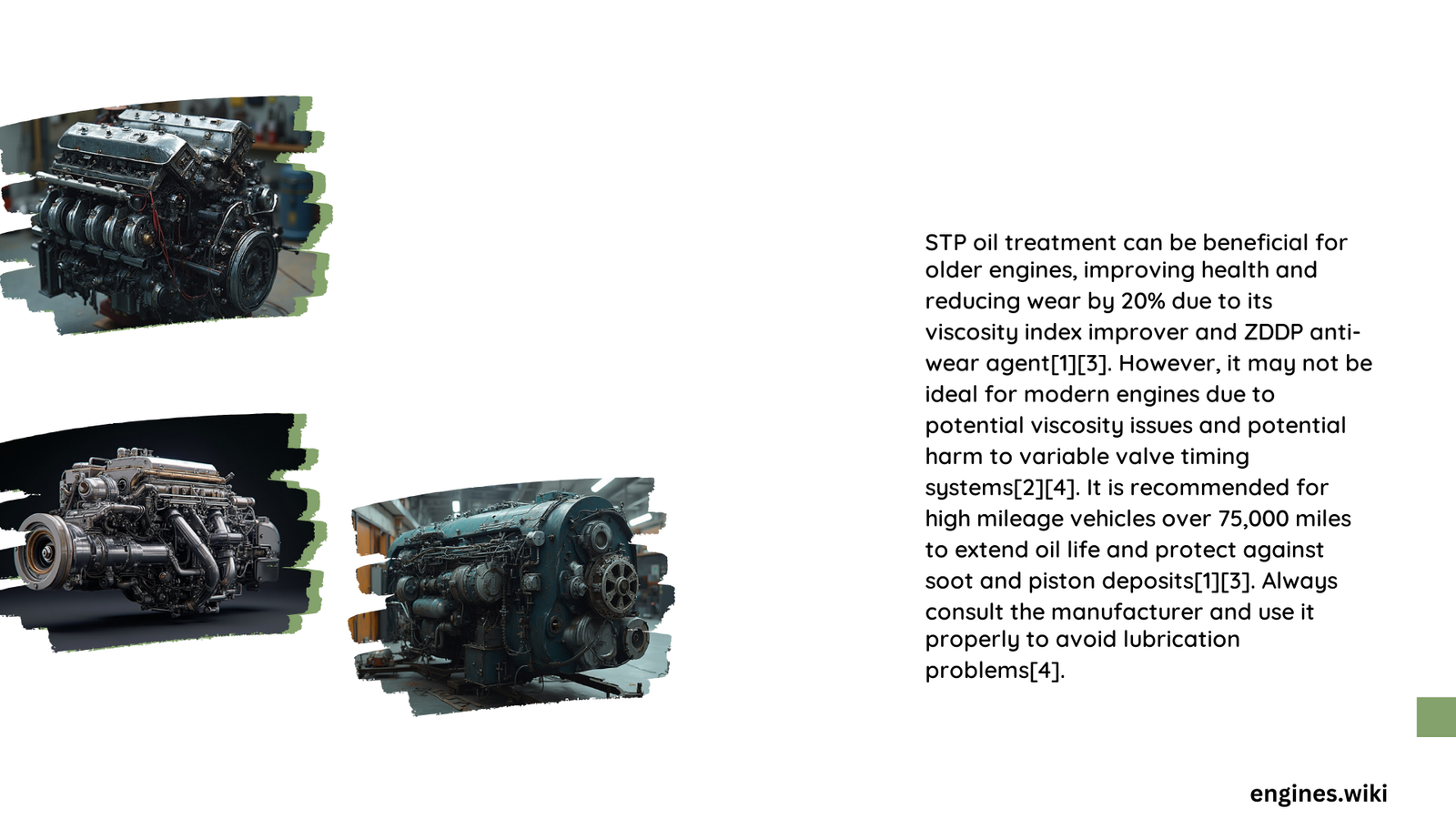STP oil treatment offers a complex solution for vehicle engine maintenance, providing potential benefits like reduced wear, improved lubrication, and enhanced engine protection. While it can help older vehicles with high mileage, modern engines might experience mixed results. Understanding its specific mechanisms, application techniques, and potential limitations is crucial for making an informed decision about using this automotive additive.
What Makes STP Oil Treatment Unique?
STP oil treatment represents a specialized automotive lubricant designed to enhance engine performance and longevity. Unlike standard motor oils, this product contains unique additives targeting specific mechanical challenges.
How Does STP Oil Treatment Protect Engine Components?
STP oil treatment works through multiple protective mechanisms:
- Friction Reduction: Creates a protective layer between metal surfaces
- Deposit Prevention: Helps minimize sludge and carbon buildup
- Seal Conditioning: Helps maintain rubber seals and reduce potential leaks
What Are the Potential Benefits for Different Vehicle Types?

| Vehicle Age | Potential Benefits | Considerations |
|---|---|---|
| High Mileage (75,000+ miles) | Significant wear reduction | May require careful application |
| Mid-Range Mileage (30,000-75,000 miles) | Moderate performance improvement | Recommended in moderation |
| New Vehicles (0-30,000 miles) | Minimal direct benefits | Potentially unnecessary |
Can STP Oil Treatment Improve Engine Performance?
While STP oil treatment can offer performance enhancements, its effectiveness varies:
- Friction Mitigation: Reduces mechanical resistance between moving parts
- Lubrication Enhancement: Provides additional protective coating
- Temperature Stability: Helps maintain consistent oil viscosity
What Challenges Might Users Experience?
Potential limitations include:
- Possible oil viscosity changes
- Not recommended for engines with advanced variable valve timing
- Risk of over-thickening in cold temperatures
- Limited effectiveness in modern, precision-engineered engines
How Should Users Apply STP Oil Treatment?
Recommended Application Guidelines:
– Add one bottle per 4-5 quarts of existing motor oil
– Apply during or between standard oil changes
– Follow manufacturer’s specific instructions carefully
What Do Automotive Experts Recommend?
Professional mechanics suggest:
– Consulting vehicle manufacturer guidelines
– Using sparingly in older, high-mileage vehicles
– Avoiding overuse in modern, technologically advanced engines
Are There Alternatives to STP Oil Treatment?
Alternative options include:
– High-quality synthetic motor oils
– Specialized high-mileage lubricants
– Professional engine treatments
Technical Insights into STP Oil Treatment Composition
The treatment typically contains:
– Zinc diacyl phosphate (ZDDP) anti-wear agents
– Viscosity index improvers
– Seal conditioning compounds
What Research Says About Long-Term Effects?
Scientific observations indicate:
– Potential minor performance improvements
– Variable results across different engine types
– Limited long-term comprehensive studies
Final Technical Assessment
STP oil treatment can be beneficial for specific scenarios, particularly in older vehicles experiencing increased mechanical wear. However, users should approach its application with careful consideration of their specific engine requirements.
Reference:
– CarFromJapan Article on Oil Treatment
– YouTube Technical Review
– Automotive Maintenance Guide
